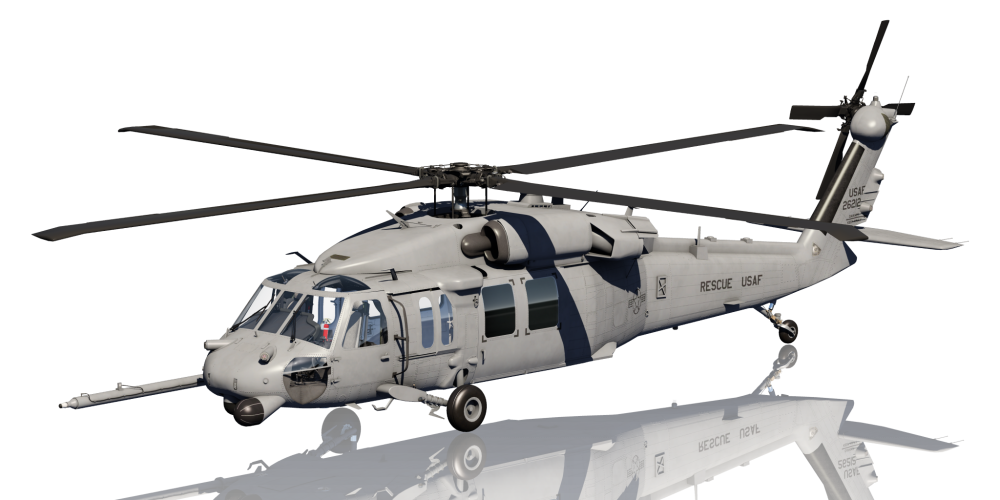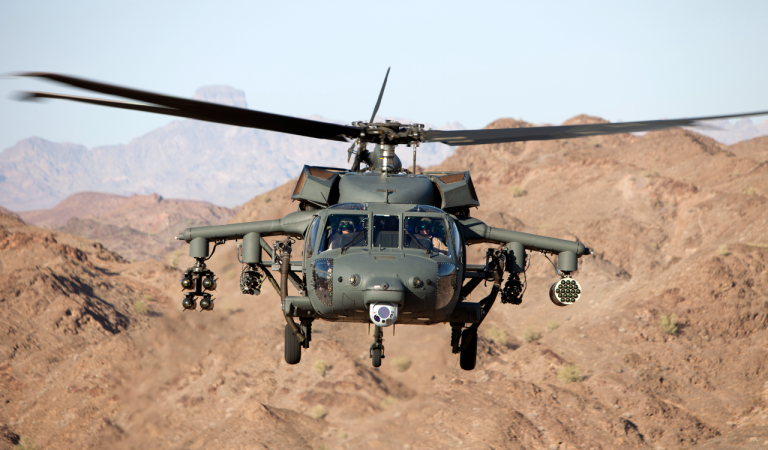The Future of the UH 60: Developments and Upgrades for Improved Performance
The Future of the UH 60: Developments and Upgrades for Improved Performance
Blog Article
UH-60: Technologies in Modern Helicopter Style
The UH-60 helicopter stands as a standard in modern-day aviation, showcasing substantial improvements in design and innovation that deal with the advancing needs of military operations. Its consolidation of sophisticated products not only enhances performance but likewise addresses crucial safety and security worries. Furthermore, the assimilation of advanced avionics has actually transformed operational capacities, enabling greater situational recognition and decision-making efficiency. As we explore the evolution and crucial advancements of the UH-60, it comes to be vital to consider how these growths influence not only current applications yet also the future landscape of helicopter style.

Development of the UH-60
The evolution of the UH-60 Black Hawk helicopter stands for a considerable landmark in aerospace engineering and armed forces air travel. Introduced in the late 1970s, the UH-60 was made by Sikorsky Airplane to fulfill the USA Army's need for a functional energy helicopter qualified of executing a range of objectives. Its style highlighted durability, speed, and ability to move, setting brand-new standards for functional performance.
The UH-60 features a distinctive four-blade blades system, which improves lift and stability, allowing it to operate successfully in diverse settings. Its airframe is constructed from advanced composite materials, contributing to a decrease in weight while preserving architectural stability. The helicopter's style additionally includes enhanced the rules of aerodynamics, which boosts gas efficiency and increases range.
For many years, the Black Hawk has undergone numerous upgrades to enhance its abilities, including enhanced engines, advanced flight control systems, and modular systems for simple maintenance and flexibility. The helicopter's ability to perform objectives varying from troop transportation to medical evacuation has actually solidified its role as a backbone of U.S. armed forces operations. The UH-60 Black Hawk stays an archetype of just how technology in helicopter design can considerably impact military performance and functional adaptability.
Advanced Avionics Equipments
Innovations in avionics systems have changed the capacities of modern helicopters like the UH-60 Black Hawk, enhancing functional performance and situational understanding (UH 60). The combination of sophisticated avionics permits boosted interaction, navigating, and trip management, making the UH-60 much more versatile in diverse objective accounts
One of the crucial attributes is the advanced electronic cabin, which utilizes multifunction displays that give real-time data, making sure pilots have instant accessibility to crucial trip details. This streamlining of information minimizes pilot workload and boosts decision-making processes during complicated procedures. Additionally, the unification of general practitioner and inertial navigating systems allows specific positioning and path planning, improving objective execution in difficult environments.
In addition, advanced avionics systems enhance communication capabilities with safe and secure data web links and voice interaction systems, enabling smooth control with ground pressures and other airplane. The integration of automatic trip control systems even more adds to enhanced security and control, specifically in unfavorable climate condition or during low-altitude maneuvers.
Engine and Performance Enhancements
Engine performance in contemporary helicopters has taken a significant jump onward, driven by technologies that boost dependability, effectiveness, and power. At the leading edge of these innovations is the adoption of even more effective turboshaft engines, specifically those employing advanced materials and technologies that enable this hyperlink higher temperature level tolerances and boosted thrust capabilities. The UH-60 Black Hawk, for instance, utilizes the T700-GE-701C engine, which includes a dual-channel, full-authority electronic engine control system. This system boosts efficiency while optimizing fuel usage and minimizing maintenance requirements.
Additionally, the integration of engine health surveillance systems enables real-time diagnostics and anticipating upkeep, significantly enhancing functional integrity. These systems not only alert staffs to prospective concerns prior to they become critical but additionally promote much more efficient maintenance scheduling, thereby decreasing downtime.

Products and Structural Innovations
Recent developments in products and architectural layout have changed modern helicopter building and construction, boosting both efficiency and durability. The introduction of sophisticated composite materials, such as carbon fiber enhanced polymers, has considerably minimized weight while maintaining structural integrity. This change not only improves fuel effectiveness but also increases haul ability, allowing helicopters like the UH-60 to carry out even more diverse objectives.
Furthermore, developments in light weight aluminum alloys and titanium components have actually added to improved resistance to deterioration and fatigue, expanding the lifespan of critical airframe aspects. The critical usage of these materials has resulted in a decrease in upkeep requirements and improved overall functional preparedness.

Additionally, the integration of computer-aided layout (CAD) and additive production innovations has actually made it possible for more complex geometries and lightweight structures, maximizing the wind resistant performance of helicopter designs. These advancements promote rapid prototyping and manufacturing, allowing producers to respond swiftly to evolving goal requirements.
Safety And Security and Survivability Attributes
Safety and survivability attributes in modern-day helicopter style have ended up being paramount, showing the enhancing demands for goal performance in tough settings. The UH-60 Black Hawk, a noteworthy instance, incorporates sophisticated modern technologies to enhance staff and traveler protection.
The helicopter additionally utilizes a ballistic security system, that includes armored staff seats and essential systems protecting, decreasing vulnerability to little arms fire and shrapnel. Enhanced situational understanding is achieved via sophisticated avionics and sensing unit modern technologies, allowing pilots to identify and stay clear of threats successfully.
Additionally, the assimilation of redundancy in crucial systems-- such as double engines and several trip Go Here control channels-- ensures continued procedure even if one system fails. The UH-60 is furnished with sophisticated emergency flotation devices, enhancing survivability in water touchdowns. Jointly, these functions not just boost the safety of workers yet also enhance mission success prices in aggressive environments, showing the commitment to quality in helicopter design.
Conclusion
The UH-60 helicopter stands for a substantial development in contemporary aeronautics technology, incorporating innovative products, innovative avionics, and robust safety features. On the whole, the UH-60 serves as a criteria for future advancements in helicopter style, personifying strength and flexibility in contemporary military procedures.
The UH-60 helicopter stands as a standard in modern-day aviation, showcasing significant advancements in style and modern technology that provide to the progressing needs of army procedures. As we discover the advancement and key developments of the UH-60, it comes to be important to think about how these advancements influence not just current applications yet also the future landscape of helicopter layout.
Introduced in the late 1970s, the UH-60 was made by Sikorsky Airplane to satisfy the United States Military's demand for a flexible utility helicopter qualified of carrying out a selection of objectives. The UH-60 Black Hawk remains a prime example of how technology in helicopter layout can significantly influence army efficiency and operational adaptability.
Overall, the UH-60 offers as a standard for future advancements in helicopter layout, embodying strength and adaptability in modern army procedures.
Report this page